Nationwide Security Solutions
Tailored strategies for businesses and communities.

Expert Risk Assessments
Comprehensive evaluations to safeguard what matters.

24/7 Operational Support
Always available, always ready.

Technology Integration
Cutting-edge tools for real-time protection.
Trusted Nationwide — Proven Worldwide.
Frequently Asked Questions
What’s the difference between a security vulnerability and a threat—and why does it matter for your organization?
A vulnerability is a weak point or gap that exposes the possibility of something being attacked, physically, digitally, or even emotionally. A threat is the intent to harm. Identifying and fixing vulnerabilities ahead of time reduces threats.
How often should a company perform a physical and digital threat assessment?
Physical assessments should be conducted routinely, however the frequency will vary based on the organization, or person. Typically once per year is sufficient. However, some industries and individuals may need to to conduct them more frequently given their threat landscape.
What are the most common physical security failures you see, even in ‘secure’ organizations?
Policies and procedures not enforced or followed. More often than not, we see policies and procedures violated, creating significant vulnerabilities to the organization. Many organizations have an assemblage of a plan, but it hasn’t been reviewed in ages, so it's out of date with the current state of the organization. Very few people within the organization are aware of the policies and procedures therefore day to day protocols are not followed and in the event of an emergency there is chaos. You need a proactive approach, not a reactive one.
After policies and procedures, we often see a lack of training and/or awareness of the surrounding environment.
How can open-source intelligence (OSINT) help prevent threats before they materialize?
OSINT is our digital eyes and ears to what we don’t personally observe in the physical environment. It allows us to monitor sentiment, direct and indirect threats, current events, open and dark web, and more. Effective monitoring provides early indicators, early indicators allow us to take the proper action to prevent threats.
What’s the ROI of conducting a professional threat assessment vs. handling security reactively?
A professional threat assessment and mitigation plan always costs less than reactive security. What costs less, periodic training of your people for preventative measures, or a catastrophic event you weren’t prepared for?
Where do organizations over-invest in security—and where do they under-invest?
It's rare we see an over-investment, rather a misallocation and/or implementation of funds. Organizations may spend a significant amount on cameras and access control systems, but not properly implement the capabilities of the system.
The under investment is typically in the assessment of the risk and under-investment in preparing their people.
How should security leaders prioritize threats in a hybrid work environment?
In a hybrid work environment, the initial threat assessment is critical, it’s also nuanced depending on the industry, employee status, etc. Post assessment, with a clear understanding of the threat landscape, the priority of threats can be assigned so the proper action steps can be in place. Examples include having strong IT SOPs in place, while also having clear policy and procedures as it relates to the job function and business environment.
What are the red flags that indicate your current security provider isn’t good enough?
So much of security is about posture, digitally and physically. If your security looks sloppy, it probably is. If your security looks disciplined, it probably is. Criminals are human like the rest of us- we typically look for the highest chance of success in whatever we pursue. If a criminal spots sloppy security, they know their ability to accomplish their intent is increased. If they see a hard target, they usually move on to an easier one. Another example is the background and experience of the team. Security is a way of life, and anyone in the industry should have a track record that proves that. A majority of the company should have extensive experience, whether it be military and/or law enforcement, high-level corporate experience and more.
What does a modern, integrated threat assessment actually look like in 2025?
It's holistic. It's an evaluation and inspection of all your systems that pertain to security and analyzing how well they function as a unit. It's looking at all the physical infrastructure and how it is supported by digital systems like cameras, access control, intel monitoring. Evaluation and application of standard operating procedures. Determining the effectiveness of the overall system, then developing a road map to resolving
What’s the biggest misconception about security assessments that puts organizations at risk?
Some organizations are reluctant to conduct a proper assessment because they are afraid of what might be discovered, or they think they already know what their vulnerabilities are, they might also be completely unaware. Just like your physical health, organizations should have assessments at least annually to determine what needs to be done to keep their organization more secure as the threat landscape evolves.








